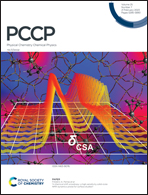The long-lived reactive nitrogen species in the troposphere: DFTB model for atmospheric applications
Abstract
The longest lived reactive NO2 molecule formation in a dry and clean air environment under a high-temperature shock wave was investigated under three basic reactions (R2 for the O + NO system, R6 for the NO + NO3 system, and R7 for the NO + O3 system) in the atmospheric environment. With certain approaches, a DFTB3 model was used, which gave results close to the density functional theory. In the calculations, the related reactions up to 250 ps were examined at individual specific temperatures, and the temperature ranges that contributed to the formation of the NO2 molecule were determined. Moreover, a shock wave with both heating and cooling channels was applied only on R2 to see whether molecular concentrations were in good agreement with atmospheric information. The reaction products were examined under a shock wave of about 20 ps. At the end of the study, the applicability of the DFTB model to atmospheric systems was demonstrated by comparing it with experimental data and information. QCT approach was also used for the calculation of reaction rate constants of only O2-formation on the O + NO system. Here, all systems are focused on nitrogen species containing oxygen. In particular, the highest-population NO molecule that emerged in the lightning flash event was used as the reactant, while systems existing with the longest lived NO2 in the atmosphere after the lightning flash were focused in the product channel. As a result of the study, the hypothesis of geophysicists that almost all NO2 formed in the lightning flash event originates from the NO + O system was disproved. It has been proven that the presence of NO3 molecules that can withstand high temperatures in such systems should be evaluated.



 Please wait while we load your content...
Please wait while we load your content...